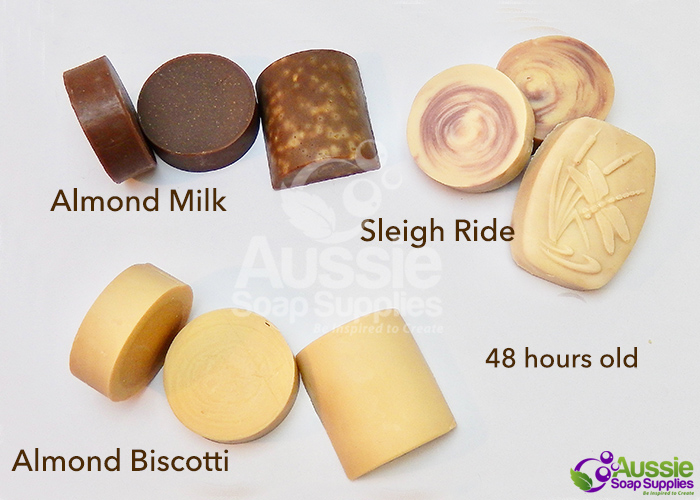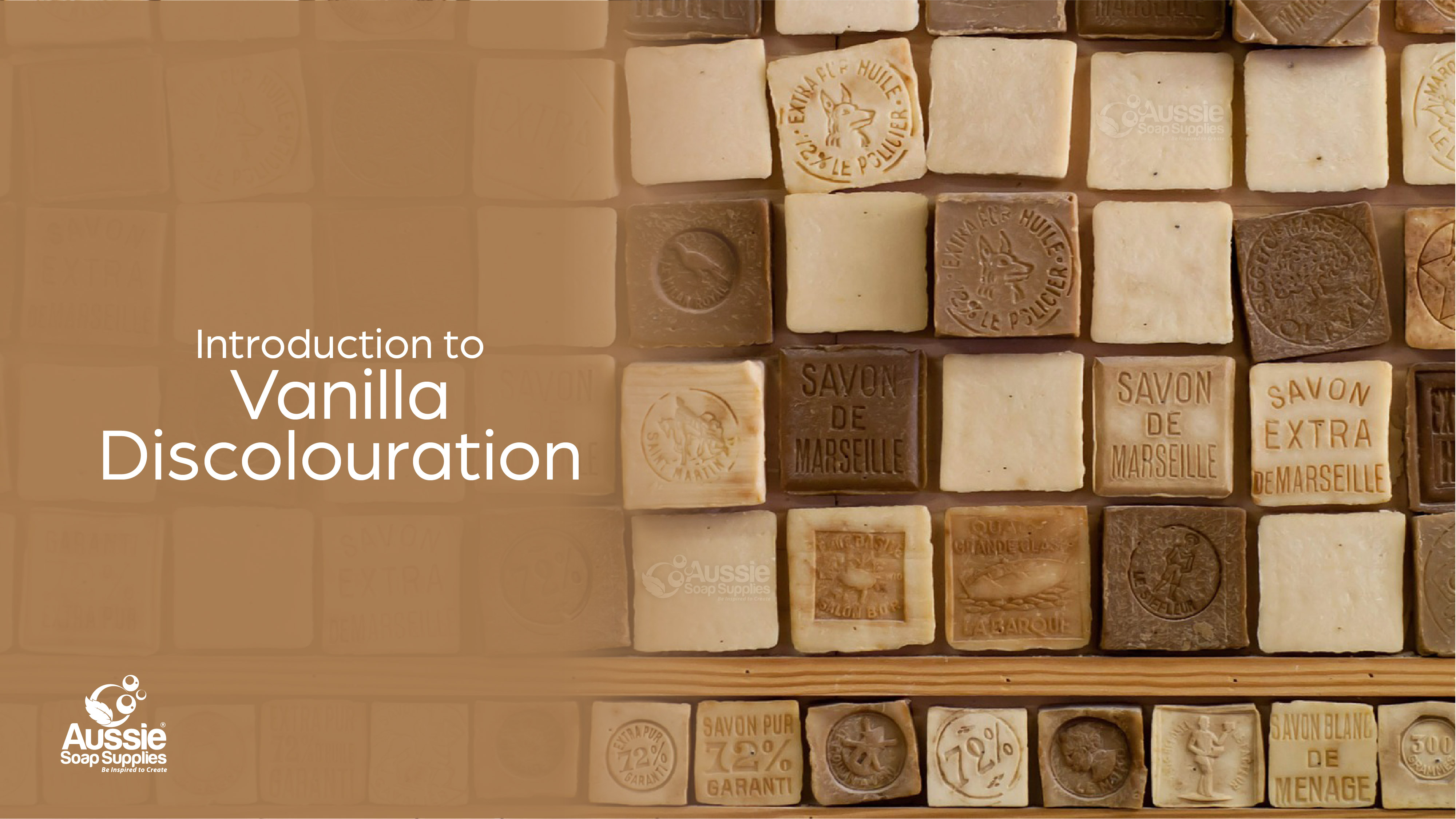
Vanilla Discolouration can be a surprise to new soapers - please do read the notes on each fragrance to check if it contains any Vanilla. As a rule of thumb, (it may not say it specifically contains vanilla) most foody fragrances do, and most deep scents do, and if it does it will have details on how dark it will discolour your soap. Using the natural discolouration of fragrance oil instead of fighting it can give you beautiful results. There are many different ingredients other than vanillin that can discolour, but it's the main thing to look for.
Note: We no longer stock some of these fragrances, please check individual fragrance pages for the results of our current lines. It is wise to do a small test in your soap recipe or in Melt and Pour Soap just to check so you aren't surprised!
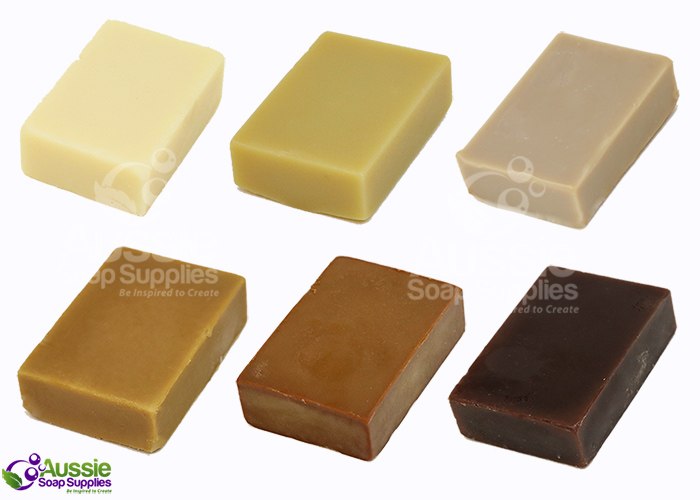
However, there are other scents that are not foody and don't have vanilla in their name, but still contain Vanillin (which is the organic compound that gives vanilla its flavour). The discolouration is a totally natural process and you'll see it happening over time as the soap is curing and open to the air. It ranges from just ivory right through to ebony (like the colour of the vanilla pod itself).
Though we test all our fragrances in cold process soap (where it's most noticeable) it also occurs in Melt and Pour, and can occur in lotions and creams and sometimes bath bombs, though not as severely.
The Tideline
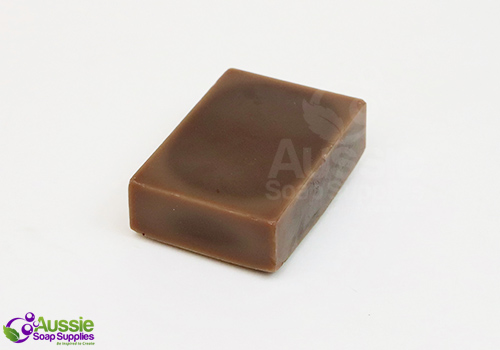
This "tide line" (which is the paler coloured ring around the darker centre) shows vanilla discolouration where the gel in the centre has deepened the amount of discolouration occurring. Over time it will even out, but it can be a little disappointing if you didn't expect it! To avoid this, soap a little warmer, or don't gel at all - soap cooler and pop the soap into the fridge. Ungelled soap is softer and will need to stay in the mould much longer.

This is Almond Milk Fragrance in Clear Melt and Pour Soap with no Vanilla Colour Stabiliser.
The Blind Swirl in Cold Process Soap
You can see in the graphics below of Cold Processed Soap through photo's taken a couple of months that as the soap has cured and the swirls are discolouring to a rich brown.
So over time, which varies with each fragrance, the discolouration will change. (This is called a blind swirl (sometimes referred to as a ghost swirl, though this is a little different), a technique I love!)
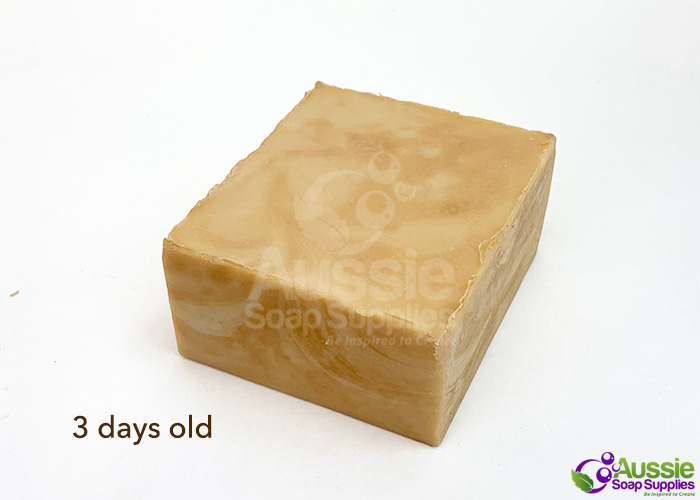
The outside of the soap discolours first, where it is in contact with the light and air.
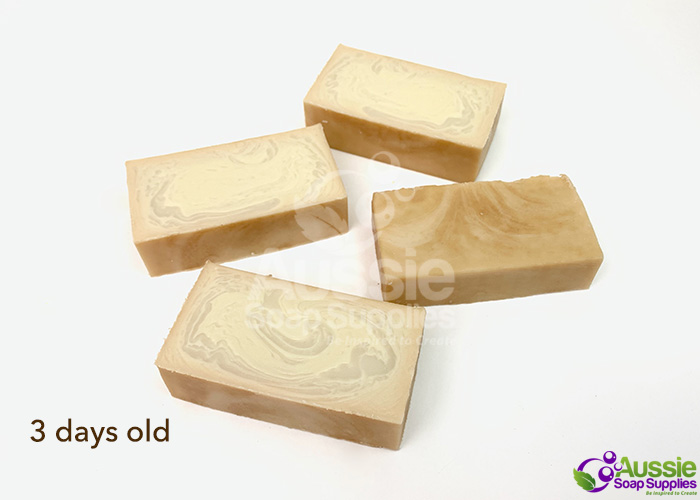
When this is cut, you can often see a darker line around the edges of the slices, and as these cure, the colour deepens all over.
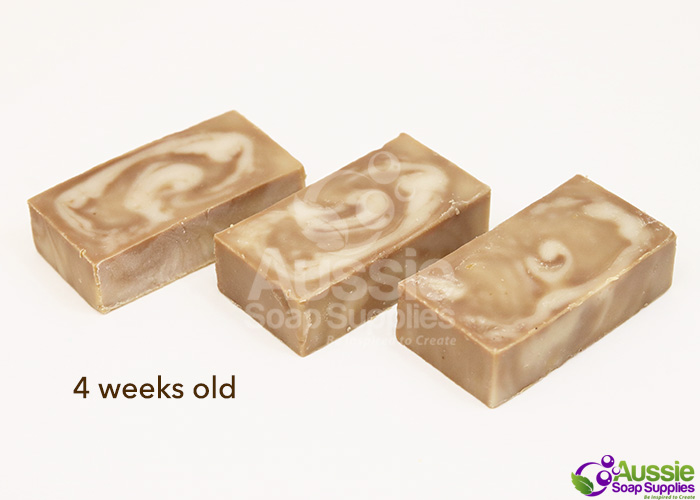
Depending on the fragrance, this may be full discolouration, or still getting darker.
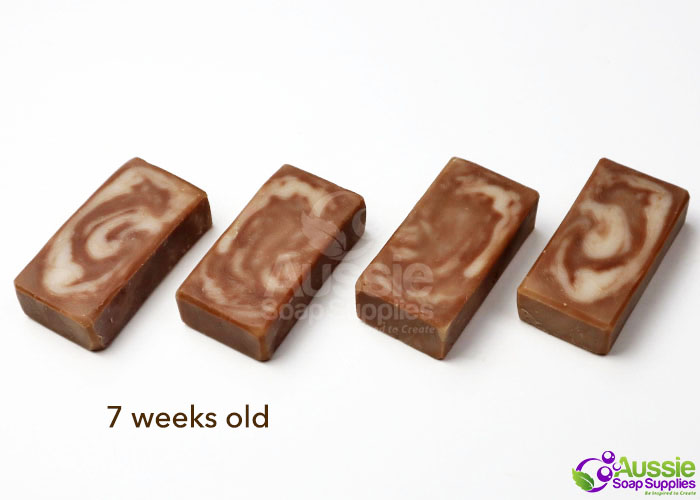
The graphics below show the varying degrees of discolouration over a mere 36 hours!
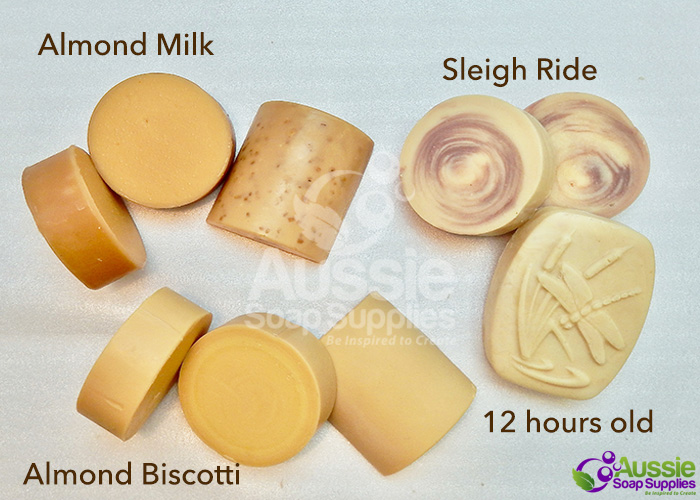
Some discolouration can takes weeks or months to occur, however sometimes it begins as soon as you add the fragrance to the traced soap.
The Sleigh Ride round soaps have some mica in so that isn't discolouration, the dragonfly is the natural discolouration.
The Almond Biscotti has a little Titanium Dioxide to round out the discolouration. All these are milk based soaps.
